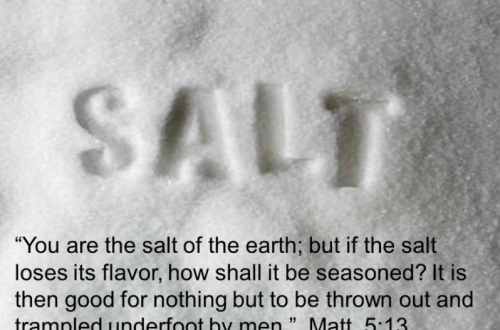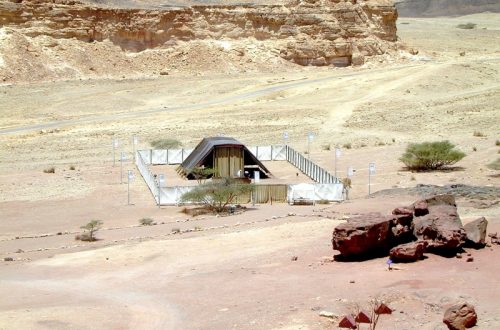Moses, called by God to deliver His people
Title: Moses, called by God to deliver His people
Aim: To remember that God is concerned with and involved in our struggles.
Scripture: Exodus 3:1–12
God gets Moses’ attention, Exodus 3:1–3
Exodus is a continuation of the narrative that began in Genesis. In fact, the first seven verses of Exodus repeat information from the final chapters of Genesis. Furthermore, the first verse of Exodus indicates that its author knew he was adding to an ongoing narrative of God’s people.
Around 1876 B.C., Jacob and his family settled in Egypt. At that time, Jacob’s son, Joseph, was the prime minister of Egypt, being the second-in-command next to Pharaoh (Gen. 41:41–43). Jacob died in 1859 B.C., and Joseph died in 1805 B.C.
For the next four centuries, the Israelites lived in Egypt (Exod. 12:40). Yet, by the time Moses was born in 1526 B.C., a new king had come to the throne, and he knew nothing about Joseph or what he had done (1:8). This ruler was possibly Ahmose, who founded the 18th dynasty and expelled a group of foreigners named the Hyksos from the land.
The next pharaoh, Thutmose III, told his people that the enormous number of Israelites living in Egypt were becoming an existential threat to the nation. He therefore ordered that they be enslaved and placed into labor gangs under harsh Egyptian taskmasters (1:9–11).
Moses, who by now had become a prominent member of Pharaoh’s court (Acts 7:22), reacted angrily at the cruelty of an Egyptian brutally beating an Israelite laborer, and so Moses murdered the Egyptian. Next, at the age of 40 (v. 23), Moses fled for his life and sought asylum among the Midianite people (Exod. 2:11–15).
Midian was situated east of the Jordan River and the Dead Sea. Midian stretched southward through the Arabian desert as far as the southern and eastern portions of the Sinai Peninsula.
Moses married Zipporah (the daughter of a Midianite priest alternatively named Reuel, Jethro, or Hobab; Exod 2:18; 3:1; Judg 4:11), started a family, and spent the next 40 years as a shepherd (Exod 2:16–22). During this time, Thutmose III died and was succeeded by his son, Amunhotep II. Meanwhile, the Israelites groaned beneath their excessive burden of slavery, and God responded to their cries for help (vv. 23–25).
When Moses was about 80 (Acts 7:30), he led his father-in-law’s flock into the wilderness far from Jethro’s camp to find enough grazing land for the animals. The shepherd stopped at “Horeb” (Exod 3:1), a Semitic term that means “dry,” “desolate,” or “desert.” This was a broad region in which was located the “mountain of God.”
Despite Horeb’s historical significance, its exact site remains unresolved (though it was possibly near the central southern end of the Sinai Peninsula). Little did Moses know that though he was now leading Jethro’s modest-sized flock to this mountain, the shepherd would one day lead the much larger flock belonging God (the Israelites) to the same mountain.
As Moses watched over Jethro’s sheep, the “angel of the Lord” (v. 2) manifested himself. The angel was the Lord’s personal emissary. As such, the celestial messenger operated in God’s authority, spoke on His behalf, and bore His credentials (Gen 16:7–11; 21:17; 22:11–15; 24:7, 40, 28; 31:11; 48:15–16; Exod 23:20–23; Judg 2:1–3).
Moses also noticed an extraordinary phenomenon, namely, a blazing “bush” (Exod 3:2). As he inspected the plant from a distance, he realized that, though “flames” completely engulfed the shrub, it remained unconsumed.
The above was a physical manifestation of the Creator’s holy presence (Gen 15:17; Exod 24:17; Ezek 1:27). The technical term is a theophany, which literally means “appearance of God.”
The wild acacia or thorn bush in the desert is generally dry and brittle. In an arid climate, a single spark can ignite such a bush, and it will burn rapidly with a great crackling. Yet, because this bush continued burning, Moses decided to move closer and scrutinize the spectacle (Exod 3:3).
God reveals Himself to Moses, Exodus 3:4–6
The Lord’s messenger saw Moses coming to take a closer look at the amazing sight unfolding before his eyes. Suddenly, a voice from within the burning bush called out, “Moses, Moses” (Exod. 3:4). The repetition of his name was intended for emphasis. It signaled that the divine appeal was immediate, personal, and direct (1 Sam 3:10).
Moses, no doubt surprised to hear a voice, simply responded, “Here I am” (Exod 3:4). This reply demonstrated his trust and availability. It was the same response that Abraham gave when the Lord asked the patriarch to sacrifice Isaac (Gen. 22:1, 11) and that Jacob gave to God when He spoke in a nighttime vision (46:2).
First, the Creator told Moses not to come any closer toward the bush. Second, God directed Moses to remove his sandals (Exod. 3:5).
The symbolic act of removing sandals would have been meaningful to someone living in Old Testament times. People often removed their sandals when entering a house to avoid bringing dust and dirt into the home. Also, priests taking off their sandals before entering a shrine represented the acknowledgement of one’s personal uncleanness in the presence of sacredness.
In the passage under consideration, the reason for the instructions was that the ground on which Moses stood was holy due to God’s sacred presence and activity being manifested there. Though Moses was a virtuous man, his character—when measured against God’s infinite holiness and absolute integrity—was shown to be defiled by uncleanness. The act of Moses removing his sandals amounted to the shepherd’s confession that he was defiled (Isa 6:5).
Moses obeyed the instructions given to him, even though the voice from the bush had not yet identified itself. We can imagine the aged shepherd wondering whether his interlocuter might be one of the pagan deities the Egyptians venerated in their pantheon.
Next, the speaker revealed that He was the God of Moses’ ancestors (Exod 3:6). The shepherd learned that Abraham, Isaac, and Jacob worshiped the Lord as their covenant-making and covenant-keeping God (Gen 15:7; 17:1; 26:24; 28:13; 31:13; 35:11; 46:3).
With this preceding statement, the Creator instructed Moses about eternal life. The ancestors of the Hebrews still lived, though their bodies had been dead for hundreds of years. In short, the deceased forebearers of God’s people were alive with Him, even when He spoke to Moses (Matt. 22:29–32; Mark 12:24–27; Luke 20:34–38).
The mention of the patriarchs also recalled the covenant God had made with Abraham, Isaac, and Jacob. The Lord still honored that sacred agreement and would rescue His people because of it. Indeed, He would do so through Moses.
When the shepherd heard the Lord’s revelation of His identity, Moses covered his face with his hands, for he was afraid to cast his gaze on the purity of the divine Creator (Exod. 3:6). Moses’ acting on his fear was well-founded in view of the ancient belief that no one could directly look at God and live (33:20). Moses feared for his life when he realized he was in the sacred presence of the Almighty.
God calls Moses to deliver the Israelites, Exodus 3:7–12
God next revealed to Moses the purpose of His appearing. The Lord said He was fully aware of the suffering the Israelites were enduring in Egypt (Exod. 3:7). As previously noted, centuries earlier, Jacob and his family went down to Egypt while Joseph was in power during the time of the famine (Gen. 46:26–27).
Though the Hebrews were treated well under Joseph, eventually a new pharaoh ascended the throne who forced God’s people into slavery and treated them cruelly (Exod. 1:14). The Egyptians made the life of the Hebrews “bitter” (or filled with anguish and despair) due to the hard labor and beatings that were typical for ancient Egyptian treatment of foreign slaves.
Exodus 12:40 states that 430 years passed from the migration of Jacob and his clan to the time of the Exodus. During that long interval, the Hebrew population grew from the relatively few in number who came with Jacob to a thriving nation of about 600,000 men of military age (v. 37). Despite this, the people were still severely oppressed and needed the Lord to deliver them out of their misery.
The anthropomorphism (a statement attributing human characteristics or behavior to God), “I have come down” (3:8), is a vivid way of stressing the Lord’s direct involvement in the affairs of His people. Considering the Hebrews’ afflictions, the Creator was about to set in motion a plan to deliver them from bondage to their Egyptian slave drivers.
The Lord would bring the Hebrews to a land that was both good (in terms of quality) and large (in terms of size). The idiomatic description of Canaan as “flowing with milk and honey” (v. 8) emphasized the agricultural productivity, abundance, and prosperity of the region, which was then occupied by a variety of indigenous peoples (Gen 13:7; 15:19–21; Num 13:29; Deut 7:1).
The Hebrew noun rendered “cry” (Exod 3:9) is a technical term for the complaint one might make to a judge. In this case, God was aware of His people’s subjugation and knew that their grievances were truthful. So, He initiated His proceedings of judgment against the oppressors.
The Creator would no longer permit the Egyptians to tyrannize the Israelites. Perhaps to Moses’ astonishment, God revealed that He would accomplish this amazing feat through Moses, His humble human instrument (v. 10).
The Lord’s command to the shepherd was straightforward and simple. He was to go, for God was sending Moses to Pharaoh for the purpose of leading the Israelites out of Egypt.
After God commissioned His bondservant for a task that seemed immense and daunting, he wondered how an aged shepherd like himself could convince the head of a powerful empire to release a huge slave population. When Moses responded to God’s call by asking “Who am I?” (v. 11), the Lord did not attempt to debate with Moses about his weakness. Instead, the Creator dealt with Moses’ sense of inadequacy in two ways.
First, God assured Moses that He would be with the shepherd all the way (v. 12). The Lord indicated that human weakness was not what mattered most. His divine power would be enough (2 Cor 12:9–10).
Second, on one level, the burning bush would be an initial, authenticating “sign” that the Creator was with Moses and the Israelites during their exodus from Egypt and journey through the Sinai desert. Yet, on another level, the final confirmation (and culmination) of God’s promise is that after Moses led the Israelites out of Egypt, he and the Lord’s chosen people would worship and serve Him at Horeb.
So, the Israelites, who were slaves in Egypt, would soon be emancipated to become bondservants of the living God. What an amazing contrast between the two masters!
One (the pharaoh) was a cruel tyrant. The other (God) was a deliverer and redeemer who intimately cared for His bondservants. The Lord would prove His care for His people by delivering and redeeming them from enslavement.
For thought and application
Anyone becoming a naturalized citizen of the United States must learn the basic history of the nation. Citizenship means knowing and appreciating the events that brought America into existence.
The same is true with our Christian faith. As actively involved members of God’s family, we seek to understand the account of His dealings with His people.
For example, Israel’s departure from Egypt was a pivotal event. Although our interest is on Moses as the key human leader in this great drama, we should remember that God was the central character.
Moses’ encounter with the Lord through the burning bush cannot be explained away by stating that it was a species of brilliant thorn bush found in Sinai or the reflection of the sunlight on the bush. No, Moses met the living God, and His holy presence defied explanation.
The Creator said that He was sending Moses to Pharaoh to lead the Israelites out of Egypt. This suggests that the Lord’s encounters with us often include a call to serve. On occasion, the tasks that He assigns to us are not what we might expect or desire.
In the case of Moses, he had no interest in returning to Egypt, where he was a wanted fugitive for murdering an Egyptian official. At times, we might drag our feet (in a manner of speaking) or plead that we are unable to carry out what the Lord wants us to do. Yet, the Lord graciously sweeps aside our excuses.
When Moses balked at appearing before Pharaoh, the Creator reassured him that he would not be alone. Regardless of how difficult or unpleasant the situation might get, God would give His bondservant success.
The Lord continues to help us to do His will. With His strength and companionship, we can worship and serve Him with confidence, regardless of the challenges we face in doing so.



